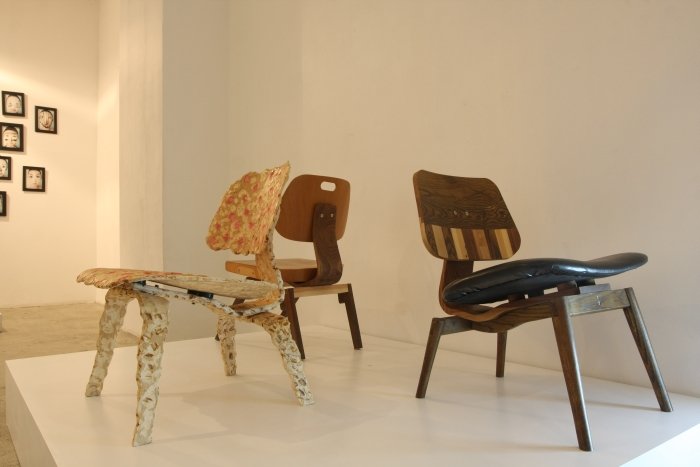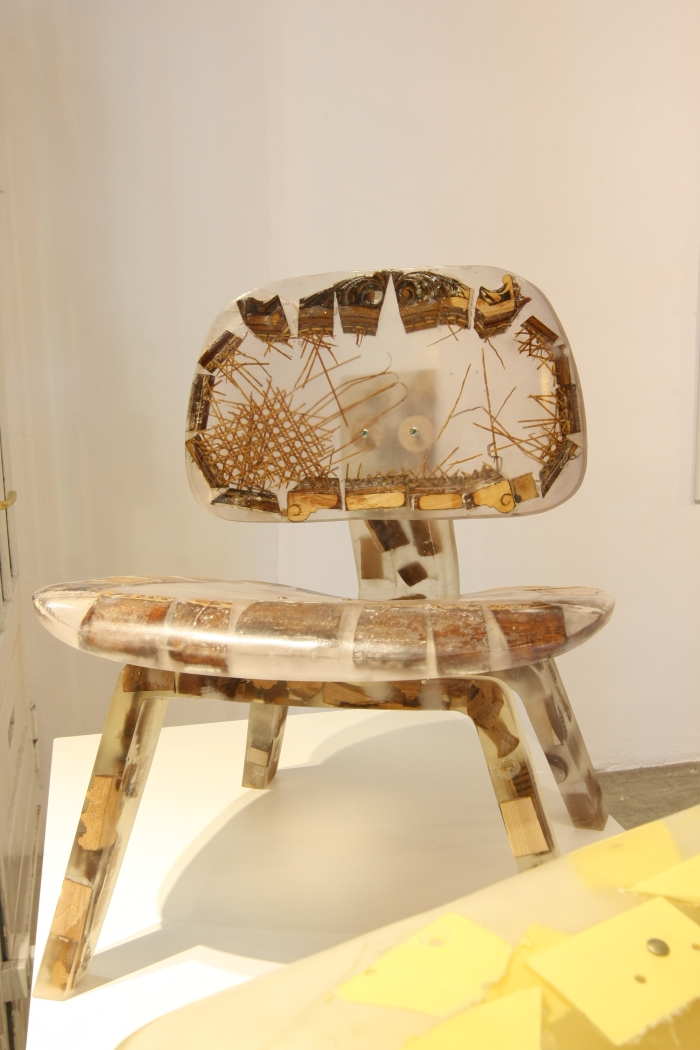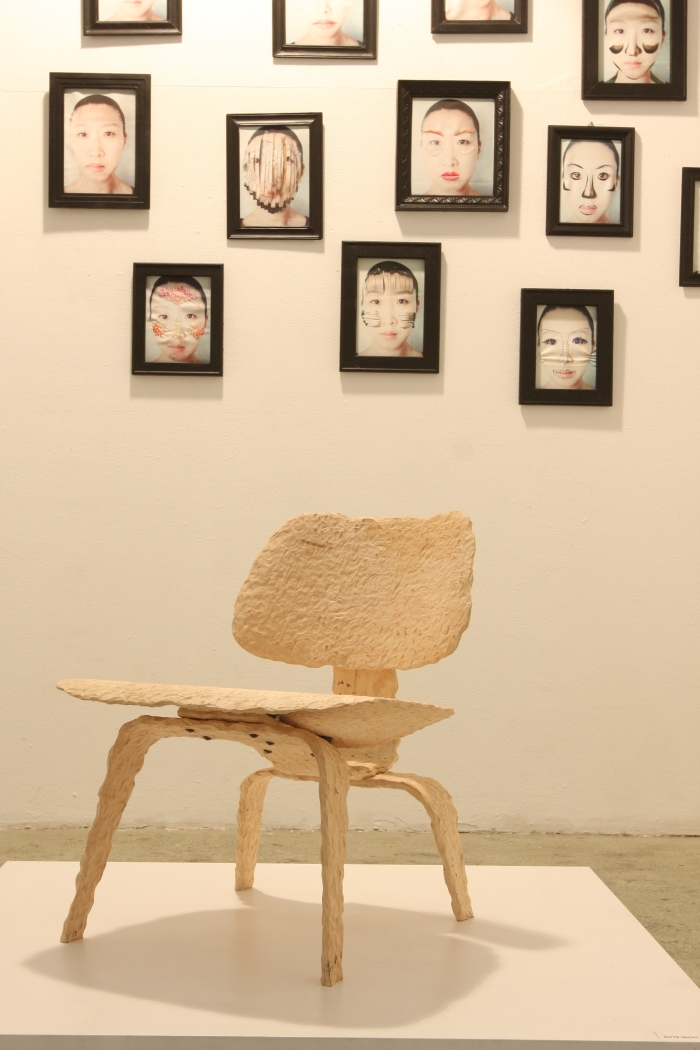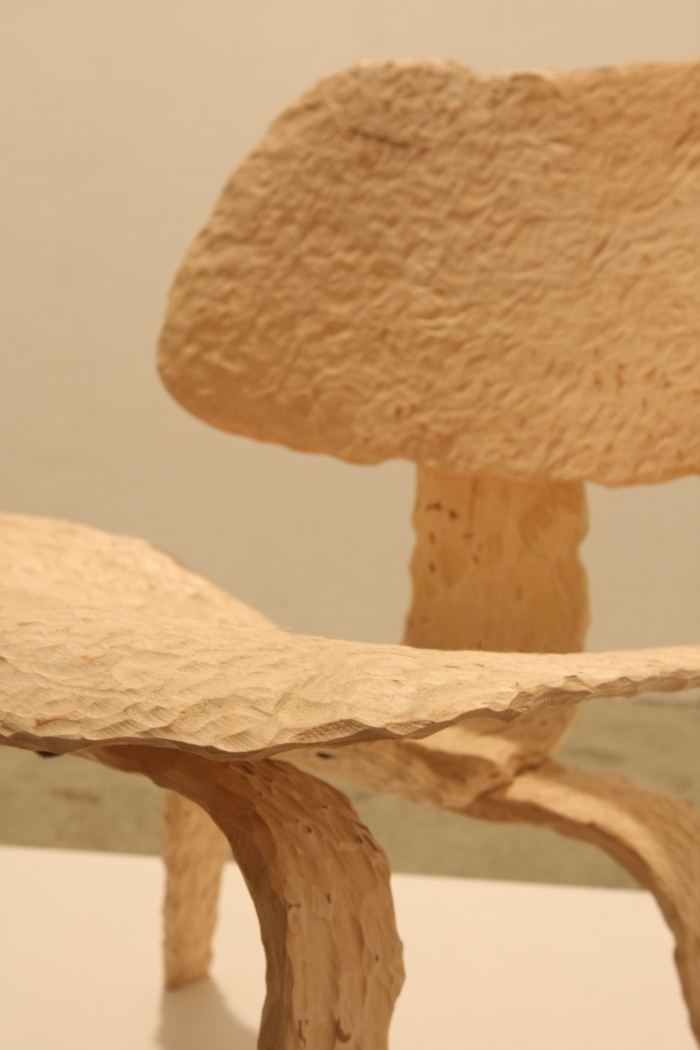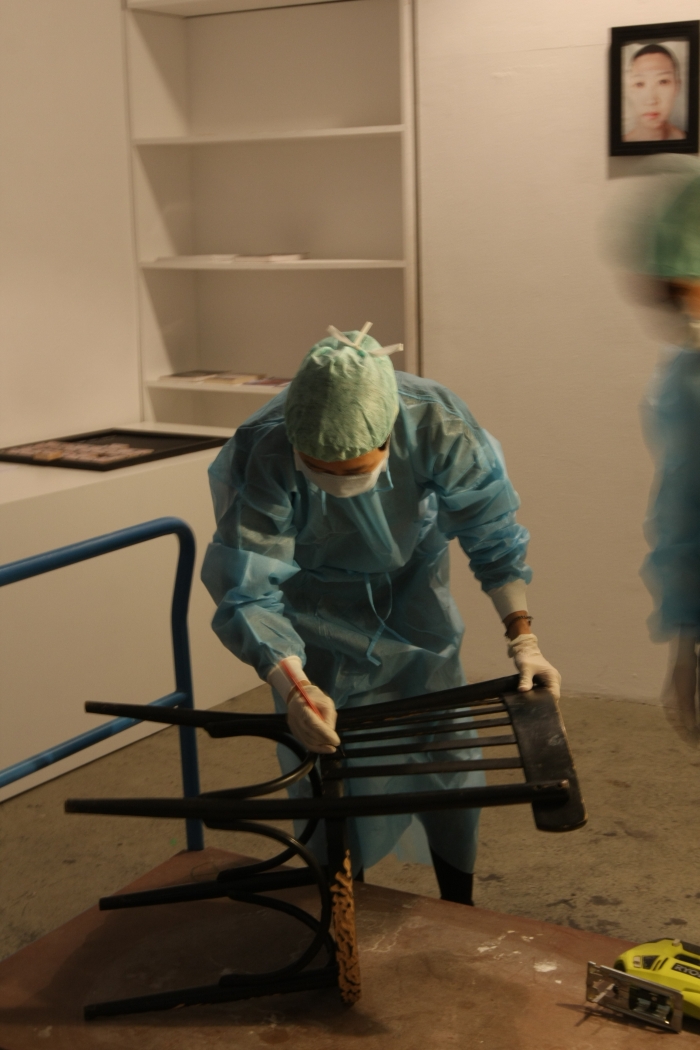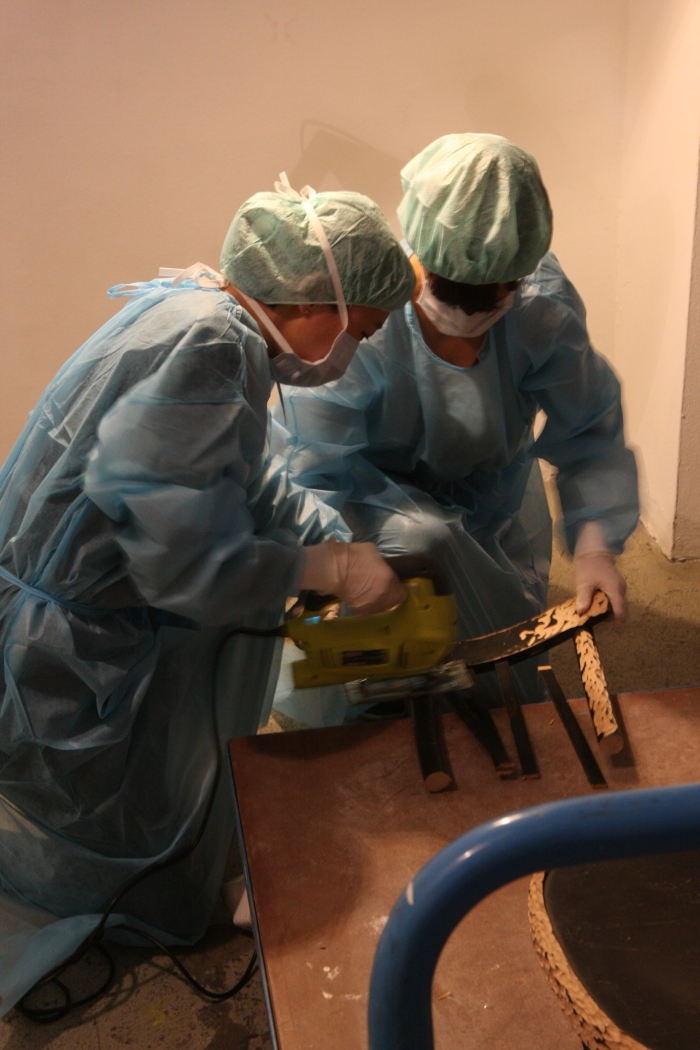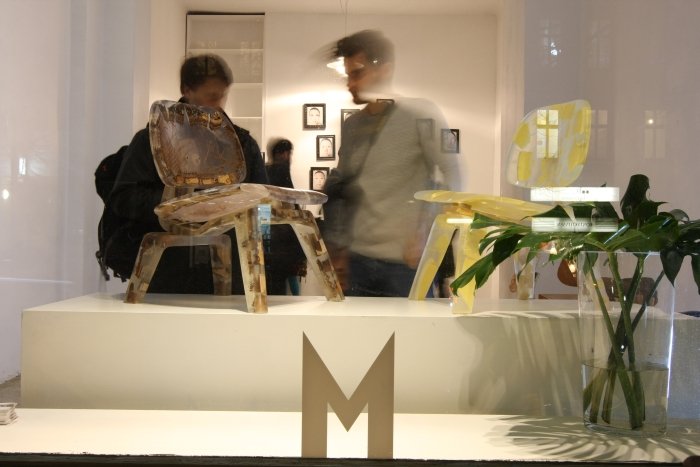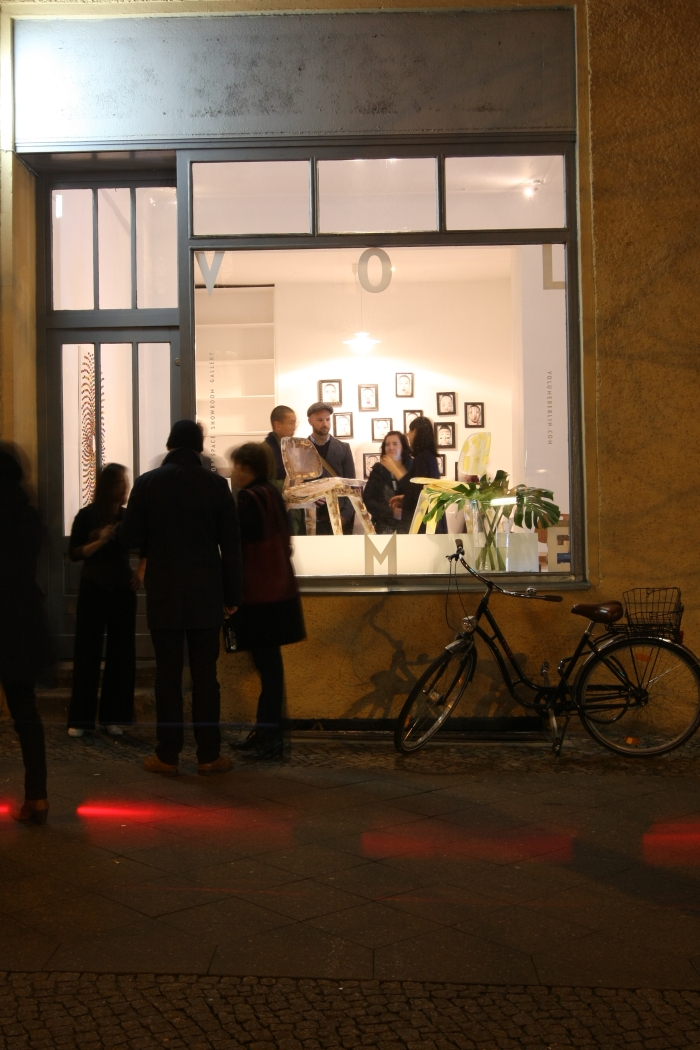For the 13th century Dominican friar Thomas Aquinas beauty required a perfect combination of integritas, consonantia & claritas - integrity, harmony, clarity. In a similar vein the 15th century Italian playwright and philosopher Leon Battista Alberti defined beauty as the harmony of all parts in relation to one another, a character in one of his plays extending this idea to proclaim, in answer to a question concerning a woman's' beauty, "She is so beautiful that nothing could be added to her, and nothing more could be wished" - an early precursor of Antoine de Saint-Exupéry's "perfection is achieved not when there is nothing left to add, but when there is nothing left to take away." Nietzsche considered that "nothing is beautiful", although being Nietzsche this assertion is tied up with enough conditions and explanations to allow one to legitimately question if not the opposite is meant. More recently Karl Lagerfeld is reported to have stated "I don't like standard beauty - there is no beauty without strangeness", words which perfectly explain why Karl Lagerfeld famously furnished two of his homes exclusively in Memphis objects. Much to Ernesto Gismondi's consternation.
And perhaps it is because deliberations on the question of beauty have accompanied mankind for almost all of its concious, cultured existence that as a global society we strive, longingly, for beauty; albeit without ever having a definite idea as to what beauty is. Or indeed why we are striving, longingly, for it.
Such, or at least similar, considerations, form the background to the project Cosmetic Surgery Kingdom by Korean born, Berlin based designer Bora Hong.
"As a Korean living in Europe I follow very closely what is happening in Korea", explains Bora Hong, "and it occured to me that there is currently too much cosmetic surgery taking place in Korea and that people are often undertaking cosmetic surgey without really thinking about it and that there is no real discussion about why so many people are having so much cosmetic surgery, and that got me thinking and I realised ultimately it was about beauty and as a designer I am also creating beauty, if beauty with a function, and so I decided to compare designing bodies with designing objects and so explore what beauty means in terms of design"
The result is and was the project Cosmetic Surgery Kingdom which can currently be viewed at Volume Gallery Berlin.
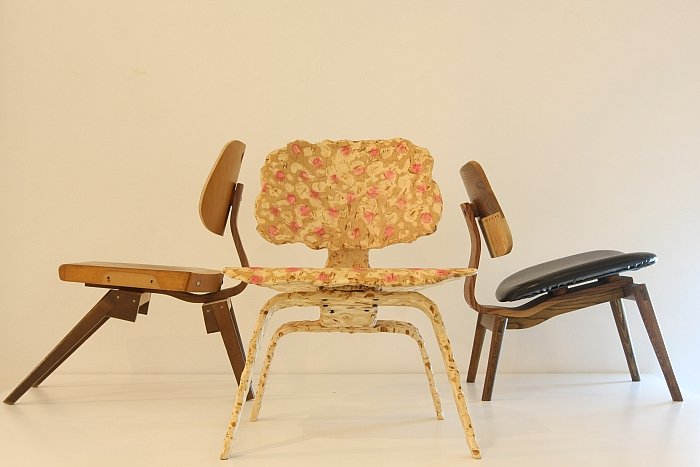
Originally undertaken as her graduation project at Design Academy Eindhoven Cosmetic Surgery Kingdom features a theoretical dissertation, a series of photos visualising the cosmetic surgery strangers recommended Bora Hong undertake and a curious, yet undeniably charming, investigation involving people trying different noses. Transferring her research into contemporary attitudes on cosmetic surgery from the animate to the inanimate world Bora Hong created a series of "Eames LCW" chairs from reassembled fragments of abandoned and forgotten "normal" chairs. The decision to use the Eames plywood chair as her standard, her definition of a beautiful chair, being based on the position the chair holds in popular culture, "the Eames chair is considered an iconic design and lots of people are only interested in iconic objects, but does that also mean that iconic objects are beautiful?" asks Bora Hong.
Cosmetic Surgery Kingdom is Bora Hong's search for an answer.
The exhibition at Volume Gallery Berlin presents, in addition to videos and photos from the Cosmetic Surgery Kingdom project, the evolution of Bora Hong's considerations on beauty in design from her reassembled LCWs over original Eames LCWs "customised" by Bora Hong with a chisel - "I considered the LCW itself might be getting bored with its appearance" - and onto the latest phase of the project in which the LCWs are recreated from epoxy resin in which are trapped fragments of old, normal, chairs: these recent works reflecting current trends in cosmetic surgery where beyond the simple alterations of yore, bones are increasingly being cut, removed and reconfigured, fundamental structural changes being undertaken and appearances being made to order, designed to order if you will. Or as Nietzsche would no doubt have put it, having transformed ourselves to mirror our ideas of perfection, we have achieved perfection.
But have we?
Bora Hong's chairs are unmistakably Eames LCWs. Yet are equally unmistakably not Eames LCWs.
As we've often noted in these pages, design classics are generally considered such because of their physical form, an idealised understanding of beauty based on commonly held registers and ideals. Yet all too often it is forgotten why they have that form, the process which led to that form and the decisions the designer, or in the case of the LCW, the designers made. Similarly it's not how you look, or indeed how you dress, that make you what you are but rather the experiences you have had and how you have reacted and responded to those which ultimately form you.
Beauty is the result of an honesty of character, be that an honesty of character in an individual or a honesty of character in a product design process.
Which is of course why Bora Hong's Eames LCWs are such commanding and fascinating works, beautiful objects even, they arise from a conviction, a belief in what is being done, a personal identification with the project, an honesty.
That they resemble the Eames LCW is more incidental than important in one's appreciations of the works.
We're not saying that Bora Hong has (re)solved the centuries long conflict and discourse on the essential nature of beauty. She hasn't. However viewing Cosmetic Surgery Kingdom could cause you to view your immediate environment, animate and inanimate, in a whole new light.
Bora Hong - Cosmetic Surgery Kingdom runs at VOLUME Gallery, Brunnenstraße 22, 10119 Berlin until Sunday December 13th. On Friday December 11th all are invited to an artist talk and Korean Food Party.
Full details can be found at www.keumprojects.com
